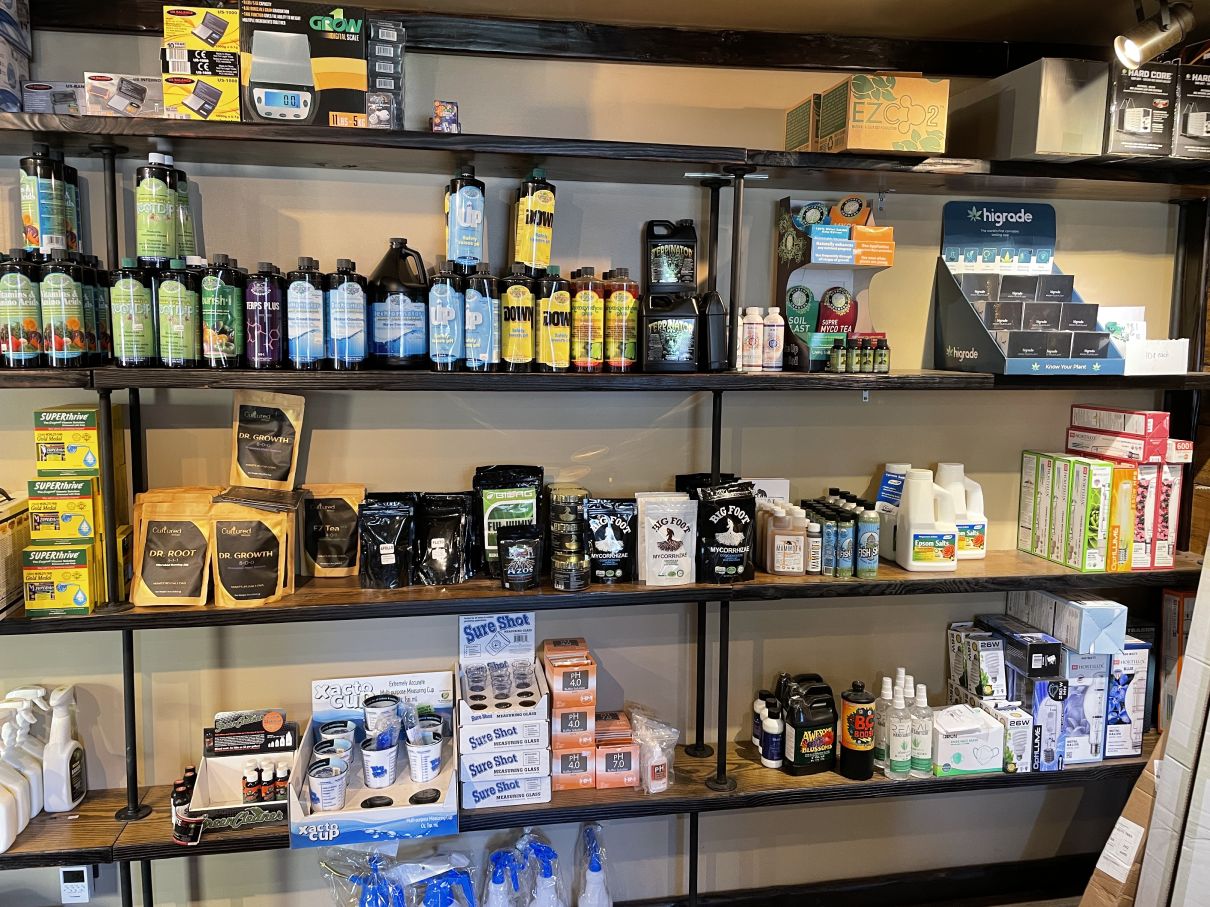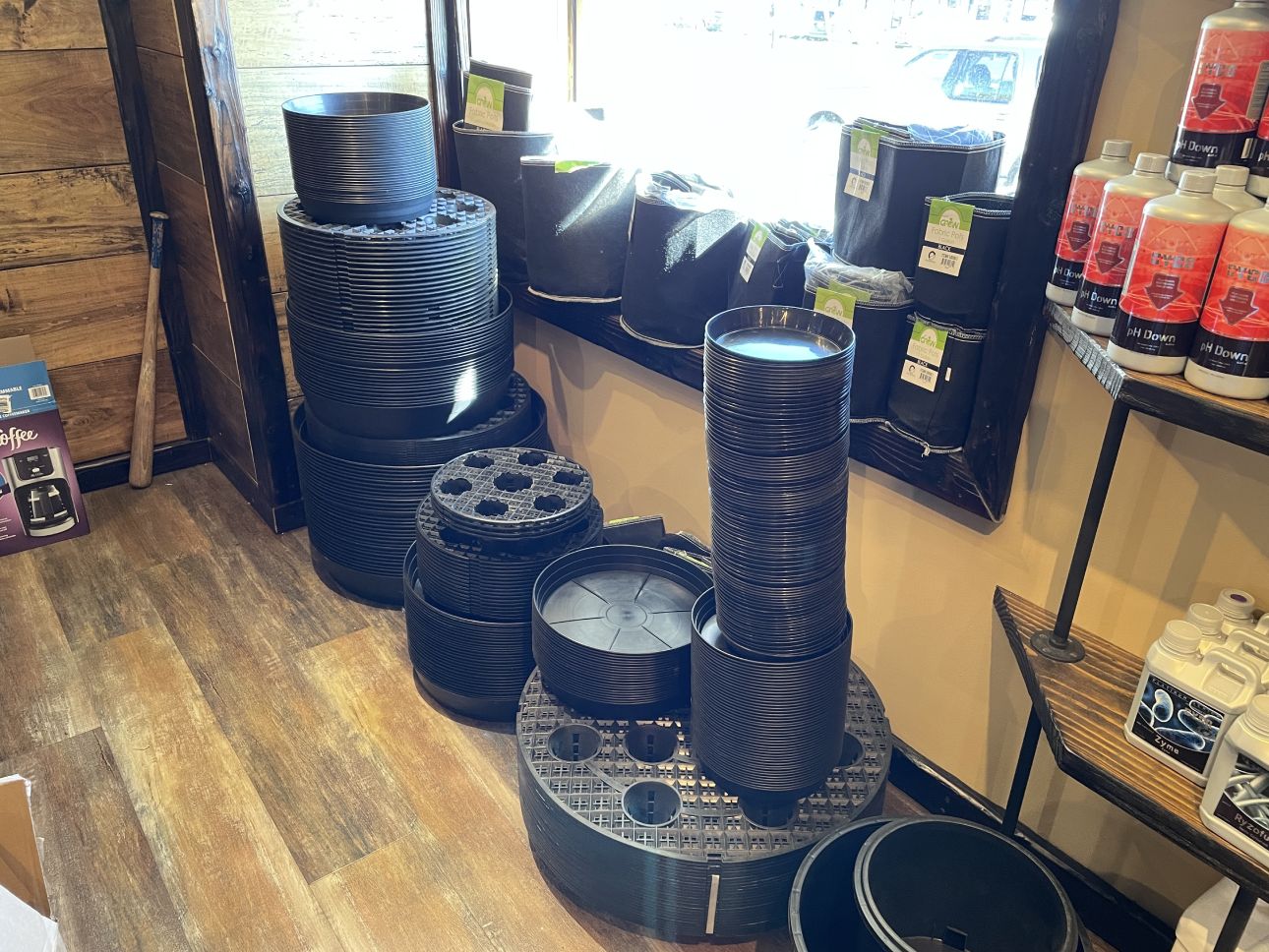Transform Your Garden with The Indoor Earthworm's Planting Strategy
Transform Your Garden with The Indoor Earthworm's Planting Strategy
Blog Article
Dive Into the Globe of Hydroponics: Discovering Different Types
Within the realm of hydroponics lies a varied variety of farming approaches that use special advantages for growing plants without soil. As we start this expedition of numerous hydroponic systems, we will certainly discover the complexities of strategies like the Nutrient Film Strategy (NFT), Deep Water Culture (DWC), Wick System, Ebb and Flow (Flooding and Drain), and Aeroponics. Each technique presents an unique method to supporting plants in a soil-less environment, encouraging development and efficiency in the world of modern agriculture.

The Nutrient Film Technique (NFT)
The Nutrient Movie Strategy (NFT) is a hydroponic system that includes a constant flow of nutrient service over plant roots in a slim movie to promote effective nutrient uptake. This method utilizes a superficial stream of water that has liquified nutrients, enabling the plant roots to have constant accessibility to the needed aspects for growth - The Indoor Earthworm. The nutrient remedy streams along the bottom of the channel, speaking to the origins and after that receding, giving an extremely oxygenated environment vital for origin health and wellness
One of the key benefits of the NFT system is its water efficiency. Given that the nutrient option is recirculated, it requires much less water compared to traditional soil-based horticulture. Additionally, the regulated atmosphere of the NFT system minimizes the danger of nutrient imbalances and conditions, causing healthier plants. Nonetheless, this technique calls for careful surveillance of pH levels and nutrient focus to guarantee optimum plant growth. On the whole, the Nutrient Film Strategy is a popular option amongst hydroponic lovers as a result of its simplicity, efficiency, and space-saving layout.
Deep Water Culture (DWC)
In a DWC system, plants are placed in net pots, enabling their roots to dangle directly into a nutrient option. The secret to success in DWC is preserving the correct oxygen degrees in the nutrient remedy to protect against origin rot and advertise healthy and balanced plant development.
Among the primary benefits of DWC is its reduced maintenance demands. With less relocating components and no demand for an intricate watering timetable, DWC is a beginner-friendly alternative for those brand-new to hydroponic gardening. Furthermore, the direct access to oxygen and nutrients allows plants to uptake what they require much more effectively, usually resulting in faster growth rates and higher yields contrasted to conventional soil cultivation methods. Controlling water temperature level and protecting against algae development in the nutrient remedy are crucial considerations when implementing a DWC system.
Wick System
In hydroponic farming, the Wick System is a passive technique that makes it possible for plants to draw up vitamins and mineral option through capillary activity. This system is suitable and simple for newbies because of its simpleness. It consists of an expanding tray filled with an inert medium like perlite or vermiculite, where plants are positioned. A wick, typically constructed from materials like cotton or nylon, prolongs from the expanding tray into a storage tank loaded with the nutrient option. The capillary activity of the wick enables the nutrient option to relocate from the reservoir to the expanding tray, ensuring a continuous supply of nutrients to the plants' origins. Among the advantages of the Wick System is its affordable and ease of configuration. Nevertheless, it might not appropriate for larger plants or those with high nutrient demands, as the easy nature of the system can lead to uneven nutrition circulation. In general, the Wick System uses a reliable and simple method to practice hydroponic horticulture. site
Ebb and Flow (Flood and Drain)
Exploring the Ups And Downs (Flooding and Drainpipe) system gives understanding right into a dynamic hydroponic technique that alternates between flooding and draining pipes the plant origins with nutrient option. This system runs by regularly flooding the plant containers with a nutrient service from a reservoir and afterwards permitting the excess remedy to drain pipes back. The process is usually controlled by a timer to click ensure normal flooding cycles, giving the origins with oxygen as the remedy declines.
Ebb and Flow systems are versatile and can suit different plant sizes and kinds. They use a great balance of water retention and oygenation, promoting healthy origin advancement. The periodic flooding aids provide nutrients directly to the origins, improving nutrient uptake efficiency. In addition, the ups and downs action prevents water stagnancy, decreasing the threat of root rot and other water-related concerns.
This approach is popular amongst hydroponic enthusiasts for its efficiency, flexibility, and simpleness to different plant requirements. With proper tracking and upkeep, the Ebb and Flow system can support durable plant development in a controlled hydroponic atmosphere.
Aeroponics
Making use of a high-pressure misting system, Aeroponics is a sophisticated hydroponic method that suspends plant roots in an oxygen-rich atmosphere to advertise optimal nutrient absorption and vigorous growth. Unlike various other hydroponic strategies, which submerge roots in water or a nutrient service, Aeroponics supplies nutrients straight to the origins through a fine haze. helpful resources This haze is splashed at normal intervals, guaranteeing that the roots get a consistent supply of water, oxygen, and nutrients.

Among the crucial advantages of Aeroponics is its capacity to make best use of nutrient uptake while lessening water usage. By supplying nutrients directly to the origins, plants can absorb them much more successfully, resulting in faster development rates and greater yields. Furthermore, the oxygen-rich environment produced by the misting system stimulates root growth and assists protect against root conditions.
Aeroponics is particularly appropriate for expanding leafy environment-friendlies, herbs, and other plants that grow in aerated atmospheres. The Indoor Earthworm. Its reliable use sources and capacity to promote fast development make it a popular option for hydroponic fanatics wanting to accomplish optimum results
Final Thought
To conclude, hydroponics offers a variety of ingenious methods for expanding plants without dirt. From the nutrient movie technique to deep water culture, each technique has its very own benefits and obstacles. By recognizing and utilizing these various kinds of hydroponic systems, individuals can explore new possibilities for sustainable agriculture and take full advantage of plant growth in controlled atmospheres.

Report this page